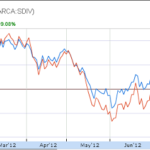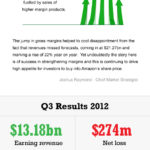Real estate investment trusts come in all shapes and sizes. Mortgage REITs give investors high-yield exposure. Retail REITs reward investors with exposure to consumption – 70% of the American GDP. And storage REITs give investors exposure to the business of storing all things that Americans buy.
So what’s the appropriate balance?
Well, it depends on what you want. Mortgage REITs are known for extraordinary yield, but come with exceptional risk to match. Meanwhile, storage and retail REITs grant investors access to a lower-yielding, more consistent corner of the REIT market.
One REIT ETF seems to get the blend just right – the IQ US Real Estate Small Cap ETF (ROOF).
One of the smallest REIT ETFs, the fund tracks the float-adjusted, market-cap weighted IQ US Real Estate Small Cap Index, an index of 45 different holdings. The index’s constituents are so small that as much as one quarter of the fund could be considered micro cap stocks.
ROOF’s Real Estate Advantage
The IQ US Real Estate Small Cap ETF (ROOF) beats other funds on yield thanks to its generous allocation to mortgage REITs. Popular mortgage REITs lead the whole industry in terms of annual yields – double digit yields are the norm, not the exception.
The fund also balances riskier REIT assets including office and retail exposure with high-yielding, safe REITs in specialized industries like health care and utilities.
See ROOF’s holdings by percentage of assets:

Here’s a comparison of capital gains in ROOF versus other popular REIT ETFs on a year-to-date basis:

ROOF’s current 4.5% dividend yield – propelled by mortgage REIT exposure – is well above its comparable peers. The iShares FTSE NAREIT Residential Plus Capped Index Fund (FEZ) yields only 3.7%. Other REITS including Vanguard’s REIT ETF (VNQ) and SPDR Dow Jones REIT ETF (RWR) yield 3.3% and 2.9%, respectively.
All in all, ROOF has managed to beat other REIT ETFs in both capital gains and dividend yields over the last year.
Unlike other funds, ROOF is undiversified, with holdings centered in the United States small-cap corner of the REIT market. This exposure will likely bring outperformance should global weakness persist during bull market runs in the United States. Small caps have historically performed stronger than mid- and large-cap stocks during recoveries and weaker in bear markets.
Solving the Complicated Problem of Exposure
What investors should appreciate most about the ROOF REIT ETF is the fact that it answers the question of appropriate balance. For what it’s worth, the ETF has been a top performer.
That said, comparable ETFs are far less expensive. ROOF leads in terms of annual expense – the fund charges .69% per year on investor capital. The Vanguard REIT ETF (VNQ) sells with an expense of .10% per year, typical of the low-cost ETF leader.
Whether or not ROOF can continue to dominate in the REIT ETF space is almost entirely dependent on the state of bond yields. ROOF’s mortgage REIT holdings need consistently low short-term yields to remain in strong financial condition. An improvement in retail and office real estate could buoy ROOF, however it is unlikely, in the new era of online shopping, that retail space will perform as well as it had for many decades prior to the 2008 financial crisis.











{ 0 comments… add one now }